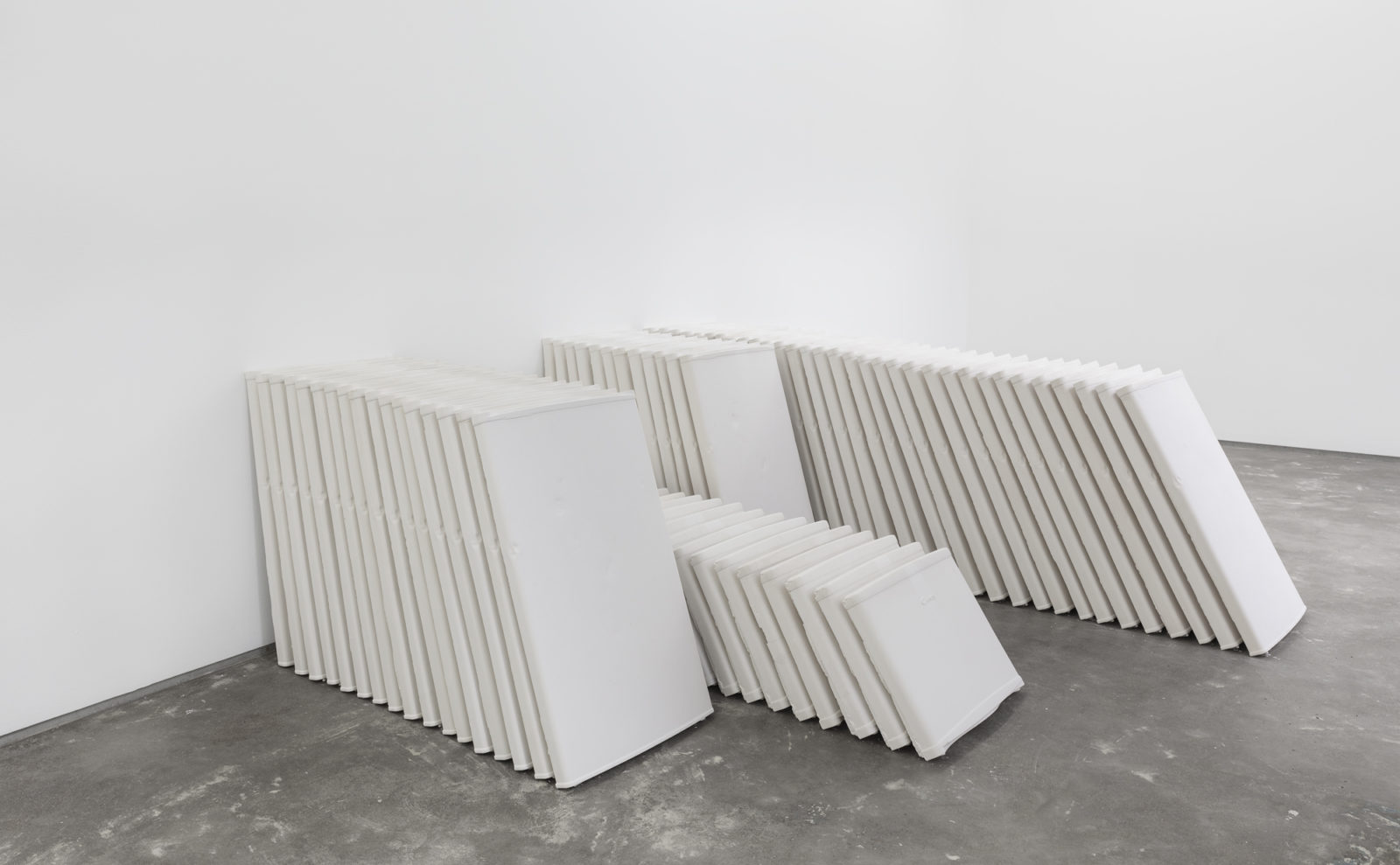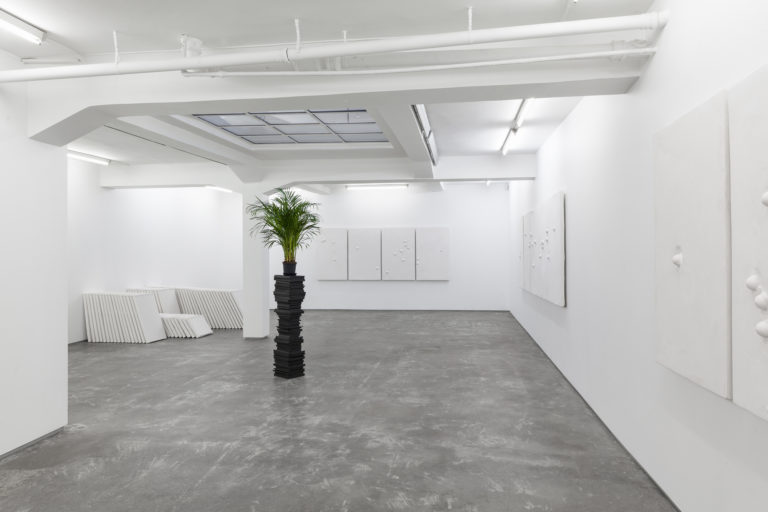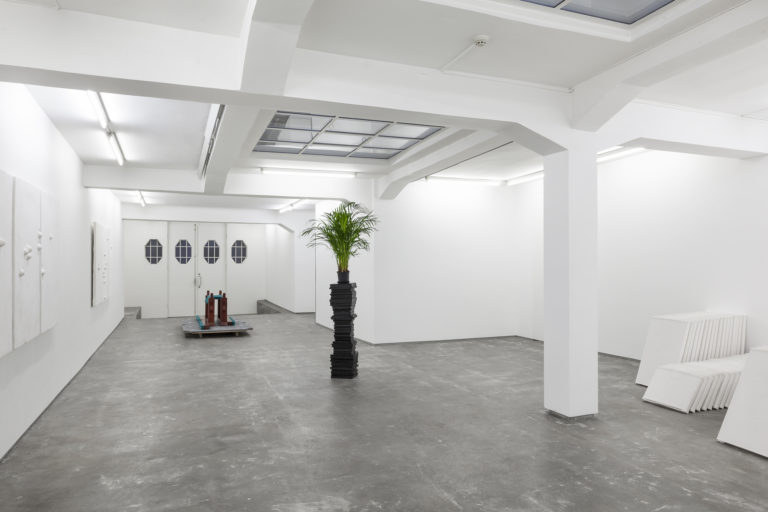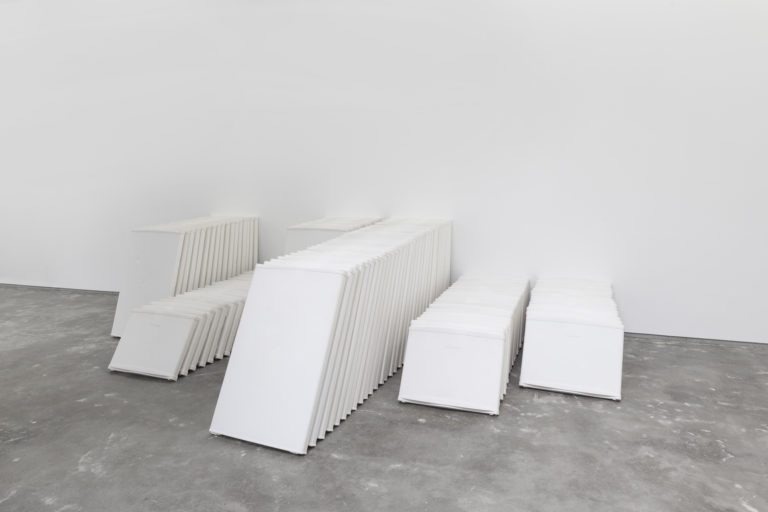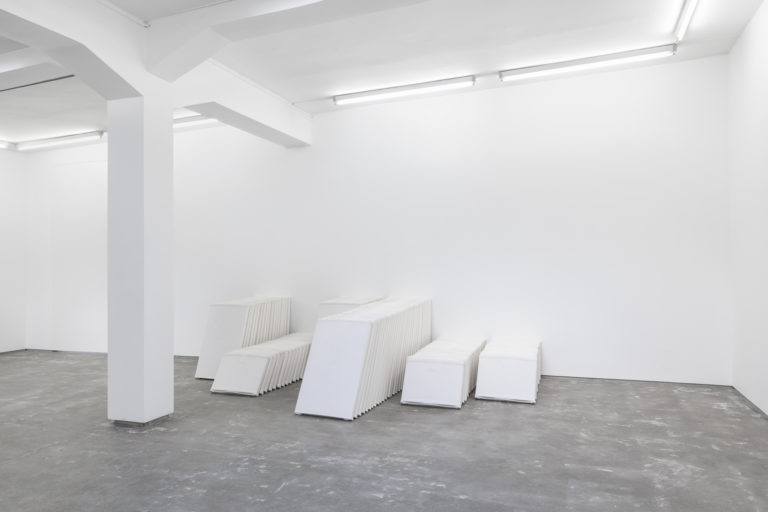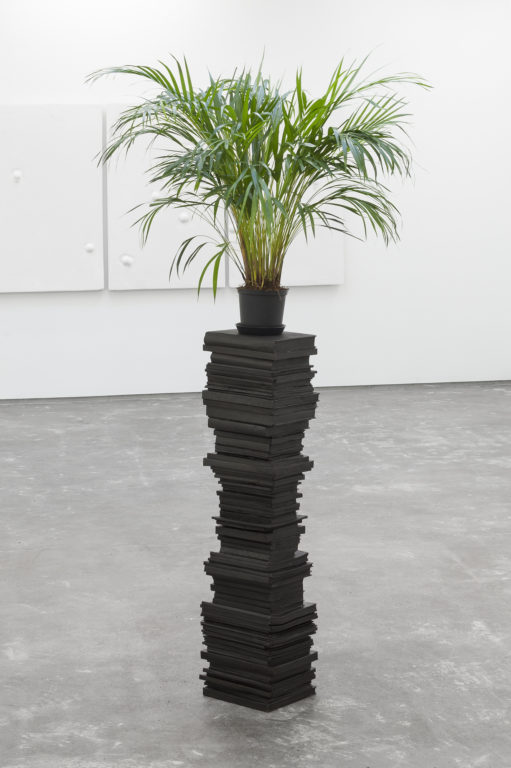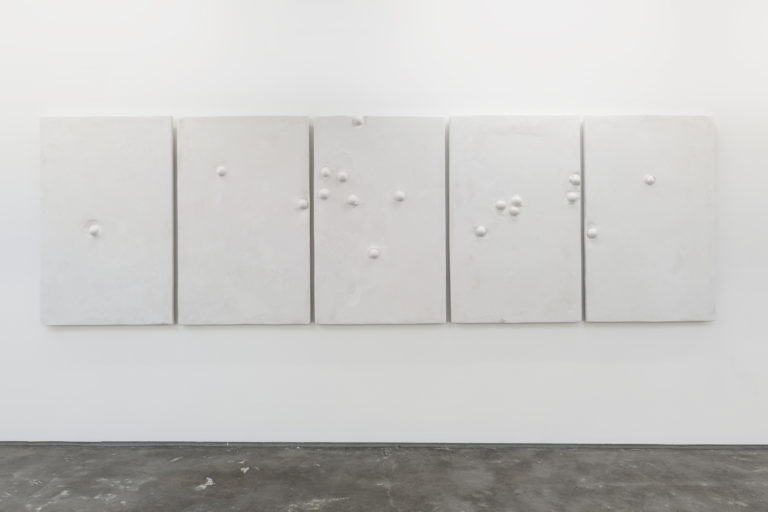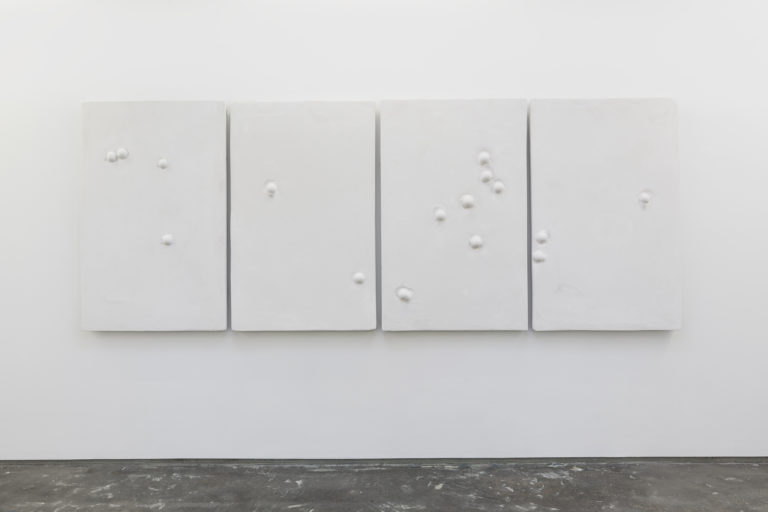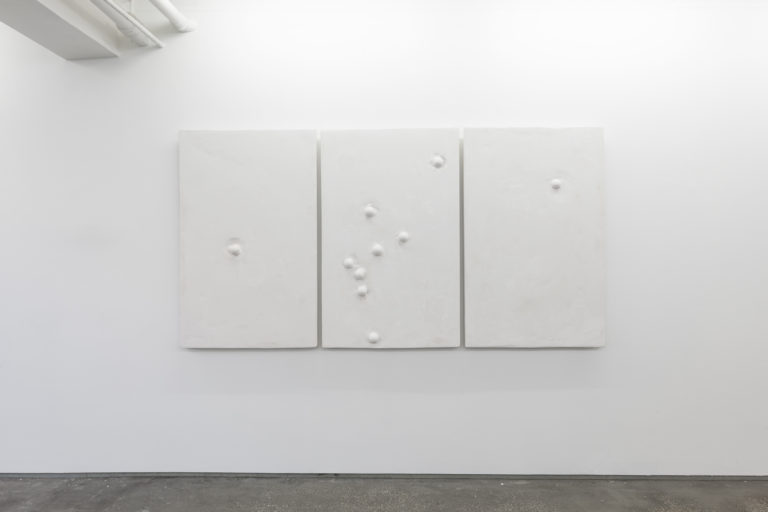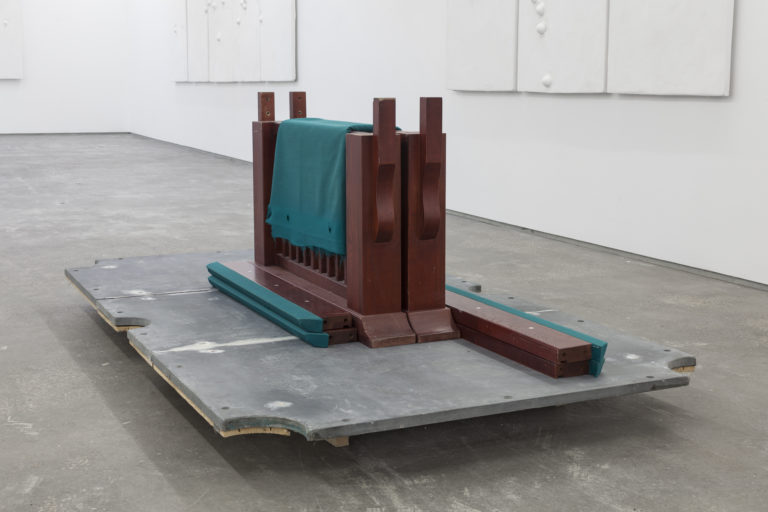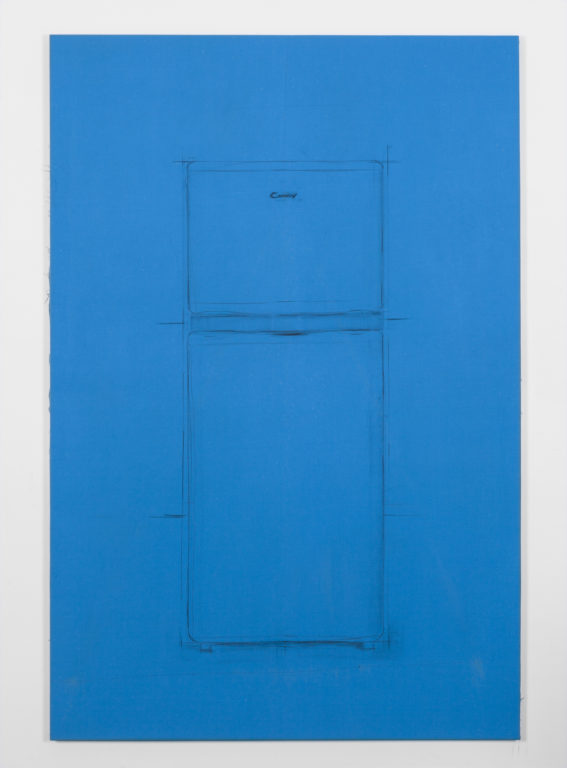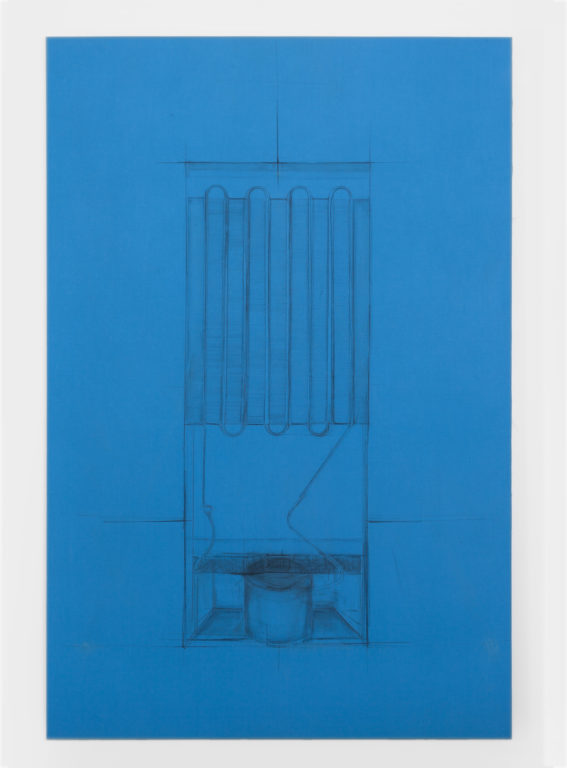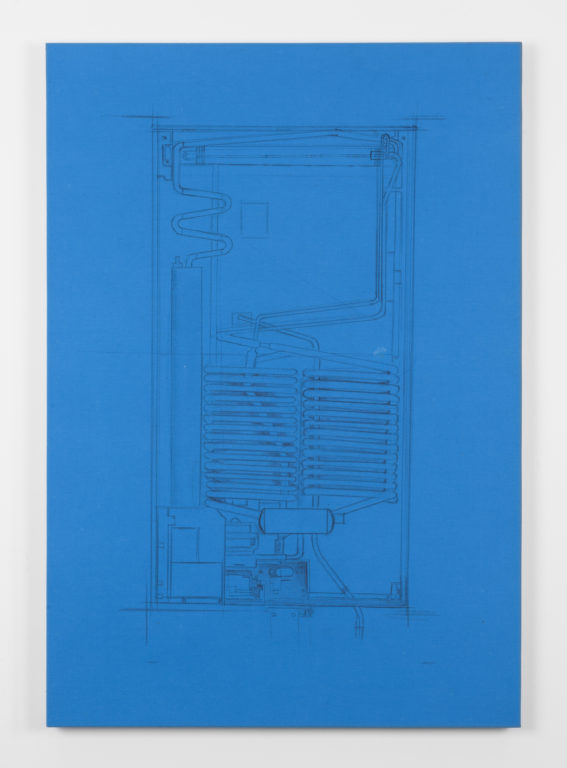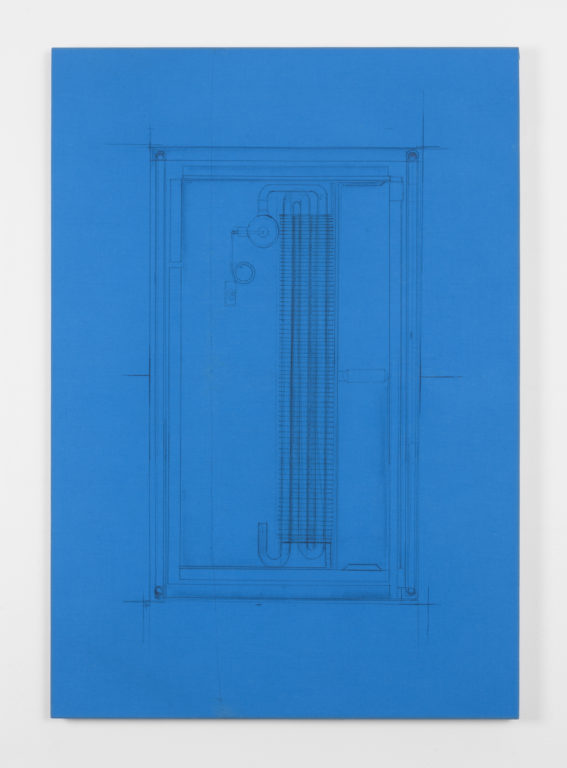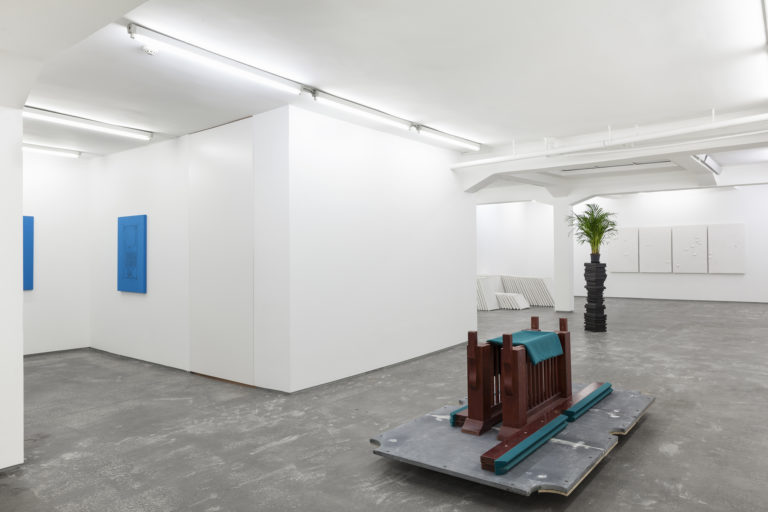OSL contemporary is proud to present its third exhibition by Vibeke Tandberg. The exhibition features the new body of work, Candy Pool, which won the artist the prestigious Lorck Schive Art Prize in 2017. Based on the concept of recycling, the works in the exhibition are made from materials and objects from Tandberg’s studio. Candy Pool comprises a disassembled 8 ft. pool table, 119 plaster casts of refrigerator and freezer doors and 12 plaster friezes made out of pool balls cast in different arrangements. The refrigerator and pool table were permanent fixtures in Tandberg’s studio for several years, and the title simply refers to the brand name of the domestic appliance, Candy, and the game.
To many, Vibeke Tandberg is best known for her celebrated photographic exploration of questions related to the body and identity, and her photo series Living Together (1996) is considered a benchmark that helped define Norwegian art in the 1990s. However, when the financial collapse hit in 2008, Tandberg was forced to rethink her artistic production. In order to survive as an artist in the new financial climate, she had to go from high-end production to a low-cost practice based on recycling her own inventory and storage to make new work. She abandoned her role as an art photographer and turned to painting, film, installations, text-based works, and literature. Everything in her studio was up for destruction and reuse, and nothing from this point on would have a permanent form or function.
Recycling is an important mantra for our consumer culture, and Tandberg has made it her work ethic. She pries items from her life and work from their original context and gives them new cohesions and connections that break them free from past definitions, categories and physical frameworks. In the process, she pushes the margins of control in an artist’s practice, addressing conditions for artistic production in contemporary art whilst engaging in a form of market-focused institutional critique.
Also on view at OSL contemporary are Tandberg’s latest wall works titled Candy on Tournament Blue. The graphite and charcoal drawings of refrigerators on stretched pool table cloths bear the sign of having been played on. The new sculpture, Bibliografi (Bibliography, 2017), a bronze cast of the artist’s bibliography from 1992-2016, is shown stacked with a potted palm placed on top. Tandberg’s Bibliografi points to how the bibliography of any artist is a physical measure of artistic and commercial value; in itself a force that influences demand, and a tool used in the commercialisation of artists in the contemporary art market. Both the palm and the sculpture are references to Marcel Broodthaers (1924-76) and his Décor series (1974-76), consisting of large-scale displays in which examples of his past work were juxtaposed with objects that were borrowed for the occasion. Broodthaers was largely concerned with two issues: the status of art as a commodity, and the impact of the museum on discourses surrounding artistic practice and its reception. His work Un Jardin d’Hiver (A Winter Garden, 1974) parodies a traditional museum or gallery space modelled on the late 19th-century palm court, once popular in wealthy European homes. Drawing a link between Europe’s imperial history and the cultural hierarchies dictated by museums and galleries, Un Jardin d’Hiver is a subtle indictment of the authority of cultural institutions, framing art as a sphere susceptible to colonisation. In a similar vein, Tandberg displays the structures informing our perception of the value of artistic production and questions the notion of artistic freedom in a market-oriented practice.
In conjunction with the exhibition at OSL contemporary, Tandberg is releasing her fourth novel. As with Tandberg’s previous novels, Eurydike Anal (Forlaget Oktober, 2018) is concerned with the writing process as a driving force for the writing itself, where the content is subordinate to the media. Absurdity and instability are goals in and of themselves, and it is difficult for the reader to repose in the experience of identification. The novel expands on subjects Tandberg has used in her previous novels, including recycling of themes and ideas; several pages and paragraphs from her three previous novels are even copied and slightly transformed to fit the new novel, in an attempt to exhaust her own literary sphere. This uncompromising technique resonates with Tandberg’s studio practice, where she reshapes old ideas and creates a tension between past and present productions, and everything is subject to transformation.
Vibeke Tandberg was born in 1967 in Oslo, Norway. Her work has been the focus of a number of exhibitions in Norway and internationally, including at Norrköping Konstmuseum (2009); Haugar Vestfold Kunstmuseum (2007); Centro per l’Arte Contemporanea, Rome (2005); Sprengel Museum, Hannover (2005); and Astrup Fearnley Museum, Oslo (2004). Her work is represented in a number of international collections, including Guggenheim, New York; Moderna Museet, Stockholm; Musée d’Art Moderne de la Ville, Paris; Museum of Modern Art, New York; Stedelijk Museum, Amsterdam; and Nasjonalmuseet for kunst, arkitektur og design, Oslo. Candy Pool will be on view from 2 March until 7 April 2018.
